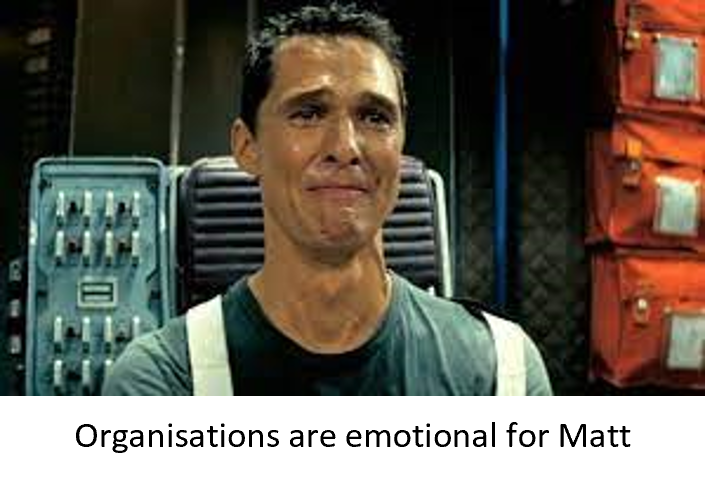Move Laterally – A Common Sense Project Lesson from Matthew McConaughey
If you don’t feel like reading, you can watch my video by clicking here.
When you’re feeling the overwhelm, the pressure, and you need a way to make projects run better in your organisation…who do you turn to?
Matthew MConaughey of course!
Hang with me here – check out the below, McConaughey from an interview on Joe Rogan’s podcast, with my emphasis:
Sometimes you go through the day or days and you’re so busy, everything you have to do, stress comes when those responsibilities feel like they’re stacked vertically on our shoulders and there’s a proverbial weight on our shoulders. When I go break a sweat, all of a sudden all those things that were stacked vertically on my shoulders, my responsibilities lay down and they’re laterally out in front of me. So there’s no more weight on my shoulder. And I find that I get those things done better and with more enjoyment. If I just go, Oh, there they are in front of you, just handle one, then hop to the next one and handle that and the next one to handle that and much more better.
Matthew McConaughey on interview with Joe Rogan 22 Oct 2020
Imagine that? A feeling of hopping from one to the next. Probably different to your workplace right? Do you find yourself hitting the end of March and suddenly realising that everything won’t get done? Then hell ensues?
The common feeling of feeling of overwhelm at work and the rush at the end comes from the way we think about and organise the various initiatives we are doing.
The Solution
The game changing thought is that it’s not about how many pavers can you carry… it’s about how many can you put through.
Say we have three projects, each four stages, each same value, same deadline…no difference. (Apologies to those I’ve worked with on my Project Factory™ Method, I know this is a broken record for you). Because of “if you wanna be startin’ somethin’, you got to be startin’ somethin’” we typically lay them out like this…
…which sees each project being worked on in parts, with Blue finishing after period 10, Red after 11, Green at 12.
Importantly, after three periods, we are now working on three projects at the same time. This means the weight has stacked vertically on your shoulders.
Let’s compare it to organising the project like this:
Now, after three periods, you are still working on just one project. When that’s done, you go the next. And the next. Which means you are able to just handle one, then hop to the next one and handle that and the next one to handle that.
And don’t miss that Blue is now finished at period 4, Red at period 8, so people are happy that they are getting their stuff sooner. And Green is still done at the same time, so no issue there (and in fact, Green would be finished way later than that due to switching from one to the other, and if you drop in more project and more stages…Green goes way out).
The real world is not as simple as this model, I know, but this does not mean that the principles don’t apply. And if you’d like some pointers on making this practical, just click here.
Quick Start
There’s a Quick Start guide to this too. Simply get together with your team, and pick a project to SHIP. By ‘ship’, I mean to focus on it, only it, and do whatever has to be done to move it out of your area. If you still need to wait for an area outside of yours to do their thing and give it back, then move it into ‘Holding’, rather than ‘Done’, but either way you have shipped it.
And now do the next thing.
This concept applies to you as an individual, then a team, then a Division and eventually we can move it to the whole organisation. Bring this idea in, and you will quickly move to an organisation that feels…
Alright
Alright
Alright.
Now…over to you.






